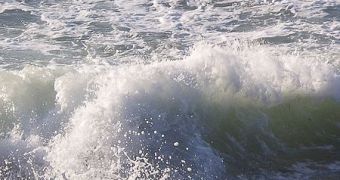A new report released by the US National Oceanic and Atmospheric Administration (NOAA) shows that the upper layers of the world's oceans have been warming continuously since 1993. The experts who conducted the investigation say that this is a strong indicator that global warming is here to stay, and add that a huge network of factors contribute to this correlation. According to initial estimates, the excess energy that was stored as heat in the oceans is enough to power up 500 light bulbs for each inhabitant of the planet.
“We are seeing the global ocean store more heat than it gives off,” sums up the results of the new study expert John Lyman. He was the leader of an international group that carried out nine separate estimative evaluations of the amount of heat that the oceans stored, between 1993 and 2008. The expert holds an appointment as an oceanographer at the NOAA Joint Institute for Marine and Atmospheric Research. The size and certainty of growing heat in the water, as presented in the new report, were obtained by combining the nine previous estimates, team members say.
The collaboration included experts based at NOAA, NASA, the Met Office Hadley Center, in the United Kingdom, the University of Hamburg, in Germany and the Meteorological Research Institute, in Japan. Details of their analysis appear in the May 20 issue of the esteemed scientific journal Nature. “The ocean is the biggest reservoir for heat in the climate system. So as the planet warms, we’re finding that 80 to 90 percent of the increased heat ends up in the ocean,” explains study researcher and NASA Jet Propulsion Laboratory oceanographer Josh Willis. The JPL is managed by the California Institute of Technology, in Pasadena.
Data on the surface temperature of the oceans – meaning the first 2,000 feet of water – are now collected with high degrees of certainty by Argo floats. These are especially designed scientific instruments that are combined in vast arrays. Of the 3,200+ Argo floats currently in the world's oceans, the majority were installed by NOAA. Other US agencies, and international partners, also operate Argo fleets of their own. The instruments can measure temperature, salinity, currents and other ocean properties, and then send their readings to a central command post, via satellite feeds.

 14 DAY TRIAL //
14 DAY TRIAL //